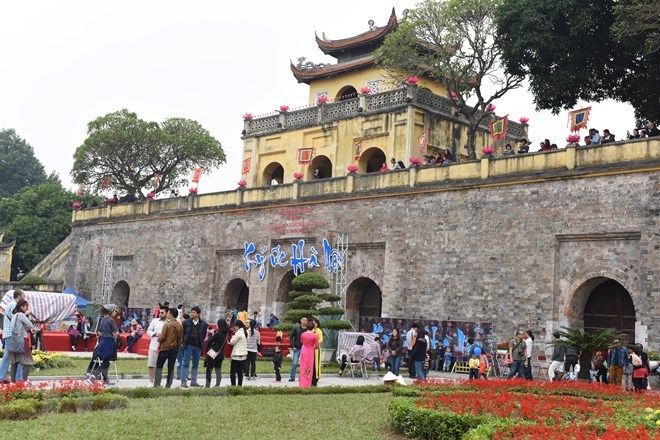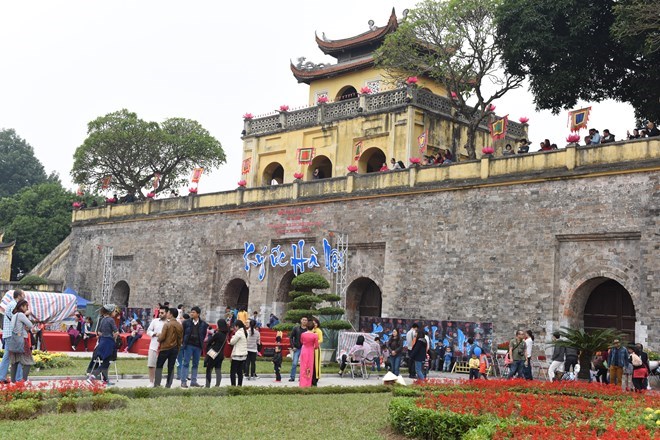
Hanoi welcomed nearly 250,000 tourists during the recent three-day National Day holiday, up 9 percent compared with the same period last year.

Tourists visit Thang Long Imperial Citadel (Source: VNA)
According to the capital’s Department of Tourism, the number of foreign
visitors to the city from September 1-3 surpassed 36,700, of whom approximately
26,500 stayed overnight, year-on-year rises of 16 percent and 17 percent,
respectively.
The tourism sector earned 645 billion VND (27.7 million USD), up 5 percent year
on year.
Notable tourist attractions in the city include the Ho Chi Minh Mausoleum, the
Thang Long Imperial Citadel and the Vietnam National Village for Ethnic Culture
and Tourism.
This year, Hanoi expects to serve more than 25.4 million holidaymakers,
including 5.5 million foreigners, and gross some 75.78 trillion VND (3.33
billion USD) in revenue.
Last year, the city welcomed nearly 5 million foreign vacationers, up 23 percent
against the previous year.
Source: VNA
Preserving and promoting the cultural values of the Muong ethnic group has become an urgent task in the current context, as many traditional values face the risk of fading away. This effort requires not only protecting the cultural identity but also eliminating outdated customs and developing a modern cultural lifestyle, contributing to sustainable values for the Muong community in Hoa Binh province.
The Muong ethnic culture, deeply rooted in Vietnam’s mountainous north, continues to be preserved and revitalised by dedicated individuals and communities determined to safeguard their ancestral identity.
The Muong group is one of the largest ethnic minorities in Vietnam, primarily found in Hoa Binh province. The Muong people in Hoa Binh boast a rich and diverse cultural treasure that reflects the unique identity of this ethnic group. Accounting for over 63% of the province's population, they have created and preserved numerous distinctive cultural values, contributing to their unique identity. Their cultural heritage is an invaluable asset, at the heart of their national identity, and represents a vibrant spiritual life that must be preserved and promoted in today’s modern world.
For generations, the ethnic communities of Hoa Binh province, particularly the Muong people, have preserved vibrant festivals deeply intertwined with the region’s geography, nature, and social traditions. These celebrations enrich Hoa Binh’s spiritual life and cultural identity, reflecting both folk beliefs and the intermingling of ethnic customs. Many of these festivals have endured the test of time, passed down through generations and continuing to thrive today. Among them, the Khai Ha (Going Down to the Field) festival stands out as one of the most significant events of the Muong ethnic group.
Muong calendar, known as sach doi, is an ancient folk knowledge system developed through observations of the movement of the pleiades star. This unique calendar consists of 12 bamboo sticks, each representing a lunar month. Specific days within each month are marked with distinct symbols, guiding locals in determining auspicious and inauspicious days for important activities.
Authorities and residents of Chieng Chau commune, Mai Chau district, are making efforts to preserve and promote the historical value of a centuries-old gold apple tree (scientifically known as diospyros decandra lour), which has been recognised as a national heritage tree.



